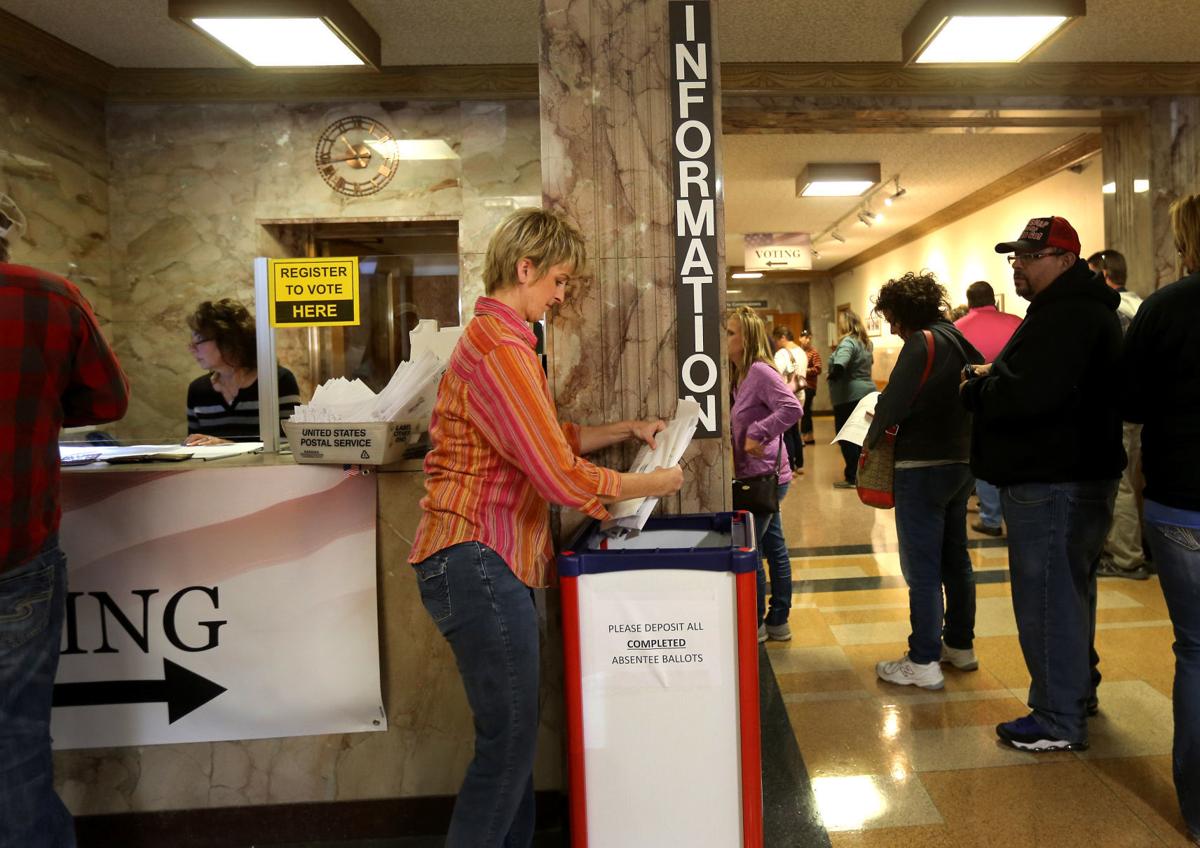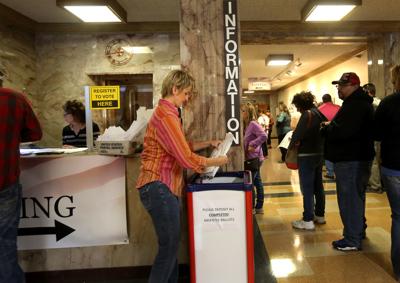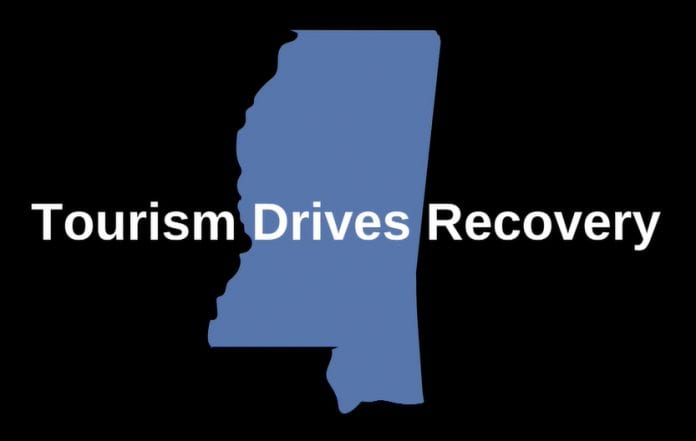Cleanliness procedures planned, uptick in absentee ballots expected in local primary elections

Tracy Good, now the Natrona County clerk, gathers early voting ballots from boxes set up outside the clerk’s office on Nov. 7, 2016, in downtown Casper. The county is expecting far more absentee ballots this election.
File, Star-Tribune
The 2020 primary election is now just more than a month away, and county offices across the state are gearing up to meet the demands of civic participation in the midst of a global pandemic.
In Natrona County, that duty falls to County Clerk Tracy Good and her staff.
“It won’t be that much different (for the voter), other than social distancing,” Good said of the coming election, but those manning the polling locations will adhere to stricter rules.
Election judges — the people who register voters at the polls and hand out ballots — will wear masks and sit behind sneeze guards. Voters won’t be required to wear masks, though mask-wearing to reduce the spread of COVID-19 is still recommended by the U.S. Centers for Disease Control and Prevention, as well as local and state health officials.
Voting booths and machines will also be sanitized, and clerks have been instructed to provide single-use pens for voters to complete their ballots with.
Good said she’s also lost four typical polling locations this year because of social distancing needs. Two are moving and two have been combined. Residents can find their polling location and view a full list of sites on the elections page of the Natrona County website.
But the number of people actually going to the polls Aug. 18 will likely be lower, if the number of absentee ballots Good has so far received is any indication.
Good said the number of absentee ballots submitted in Natrona County is already up 62% from the total received in 2018. She said as of Monday, she’s received 5,743 absentee ballots from Natrona County residents. In 2018, the county processed 3,533 total.
“People that normally don’t absentee vote definitely are,” Good said, adding that COVID-19 is likely a factor.
She partly attributes the uptick to the Wyoming Secretary of State’s Office, which this year mailed absentee ballot requests to all registered voters in Wyoming — another effort to limit the spread of COVID-19 by limiting the number of people in a polling place.
Good said her office doesn’t have a preference how people vote, either in person or absentee.
“It just depends on their comfort level,” she said.
But the uptick in absentee ballots will make processing all those votes more arduous, she said, particularly because while voters are able to submit absentee ballots as early as 45 days ahead of the election, and until 7 p.m. on election day, her office isn’t legally allowed to process the ballots until the day of the primary.
Good said she’s hoping the number of absentee ballots won’t delay election results but said getting those results “will be more labor intensive, for sure.”
Regardless of whether voters cast their ballots absentee or in person, local elections in Natrona County will be heated, with all but one race county-wide currently contested. The Evansville Town Council race is no longer contested because Forrest Tobin has withdrawn his candidacy, leaving two candidates for two open seats.
All other local elections in Natrona County will have winners and losers this year — though not necessarily in August.
Wyoming state statute dictates that the number of candidates that move forward to the general election in municipal races is twice the number of seats available. For example, two seats are open in the 2020 race for Casper City Council’s Ward I, so four candidates will move on to the general election. Only four candidates are running — one candidate, Tim Hamre, has withdrawn — so all four will move forward, regardless of how the primary pans out.
In Ward II, however, two seats are open and six candidates are running, meaning the two with the fewest votes won’t advance.
Municipal elections differ from county, state and congressional races in the sense that they are nonpartisan. Because candidates are not separated by party on the ballot, the number of candidates who advance to the general election is determined by the sheer number of votes.
County Commissioner races are partisan and therefore look more like a standard primary election, with two candidates moving forward to the general election. But because two County Commission seats are open this year, the primary election will essentially determine the commissioner race.
Because all candidates vying for the office are Republicans, the top two Republicans will advance. If there were Democratic candidates, one Republican and one Democrat would advance.
However, if a Democratic candidate receives at least 25 write-in votes, they will advance along with the top Republican vote earner, Good said.
Follow local government reporter Morgan Hughes on Twitter @morganhwrites





